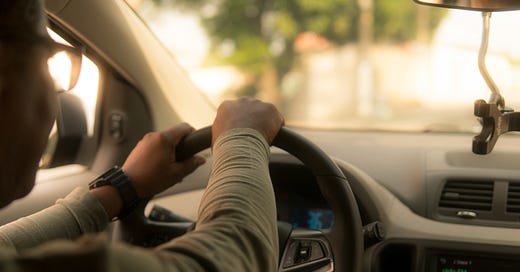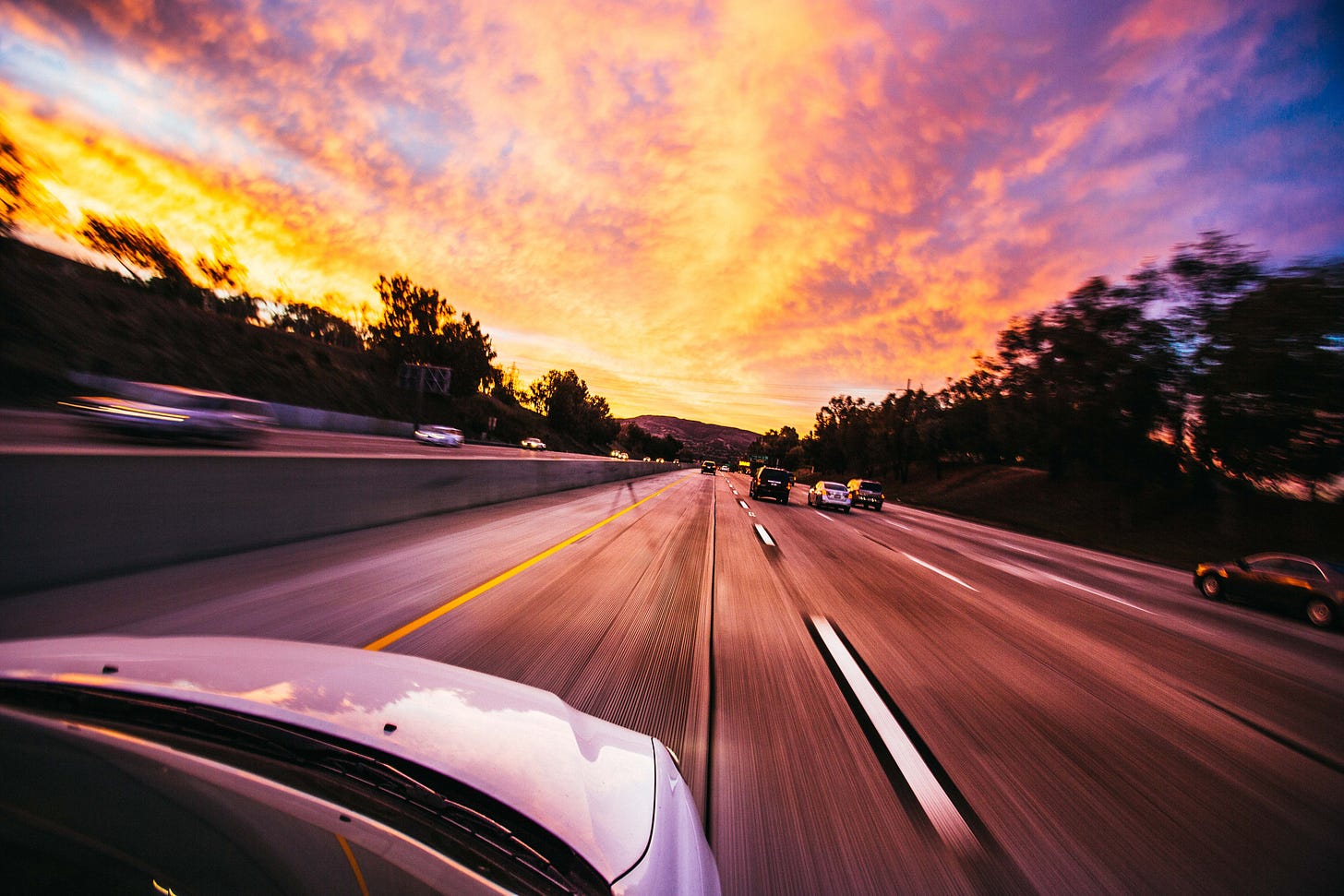Excerpt from the book by the same name, available on Amazon and also on my website.
As I write this the contours of the New Normal are still hazy, except for one thing: Whatever it is we settle on for the remainder of 2020 and a good chunk of 2021, it will not involve nearly as much transportation as it used to. The changes we are making now will be with us for some time.
And that’s bad news for people who make a living driving others. In May 2020 Uber announced it was laying off nearly 15 percent of its global workforce while Lyft, its closest competitor, also announced massive layoffs.
The companies are deeply affected by the pandemic. Not only is there less demand, but attracting and retaining drivers is a challenge because few people are brave (or desperate) enough to take a job whose very essence is to be in close contact with strangers.
There are no reliable statistics available as of the summer of 2020 for how many Uber and Lyft drivers have been infected or died from COVID-19. But nothing in the headlines and what we know so far suggests they as a group will escape the virus any more than the next group of vulnerable workers. Same with taxi drivers, by the way. Sharing confined space with lots of different people is an inherently dangerous business these days. It’s hard for drivers to protect themselves, even if they’re wearing masks and Lysoling their car between each ride.
All I can say is, I feel for those people, already among the more vulnerable segment of the workforce. And man, am I glad I no longer count myself among them.
EVERYBODY KNOWS WHAT IT’S like to ride an Uber. That’s the super easy part. You begin by getting yourself stranded somewhere, then hail a car and ride it to your destination. You don’t even need to touch money. Like, it works, right?
But who knows what it feels to be the driver?
I do. I spent a little over a year driving both for Uber and Lyft while I rebuilt my life at the end of several years during which my marriage was slowly dying of unhappiness and related causes. For reasons we don’t need to get into, I found myself without assets beyond a car and a little bit of money with which to furnish my new nest.
My goal was to return to a writing career after a long break from the traditional workforce. I left my last real job in 2013, because I couldn’t keep up with the schedule of full-time homeschooling and full-time work on no sleep.
I was a homeschooler between 2006 and 2018. In there I also managed to work more or less full-time until 2013, when I collapsed for good of my fourth burnout, a lifetime achievement of sorts. Between 2014 and 2018 I helped launch my ex’s career as a filmmaker.
By the time I left the house in 2018 I had not been independently employed since 2013. I was also in my late 40s. Where was I supposed to start?
I went looking for grown-up jobs in communications, but the giant hole in my resume made that search less than entirely fruitful. Also long. Plus I had an extra requirement: No job was to prevent me from continuing to write on the side. Often when you toil as someone else’s mouthpiece, that someone insists that their mouth be the only one you should speak for. That was a non-starter.
I did eventually find a great job that checked all the right boxes, but not until late 2019. A year and a half after I moved out. I’m in a happy place now, doing work I enjoy that pays all my bills. Life is good.
It’s the part between the summer of 2018 and December 2019 that needed something else. A job that was flexible, somewhat non-committal, easy to slip in and out of.
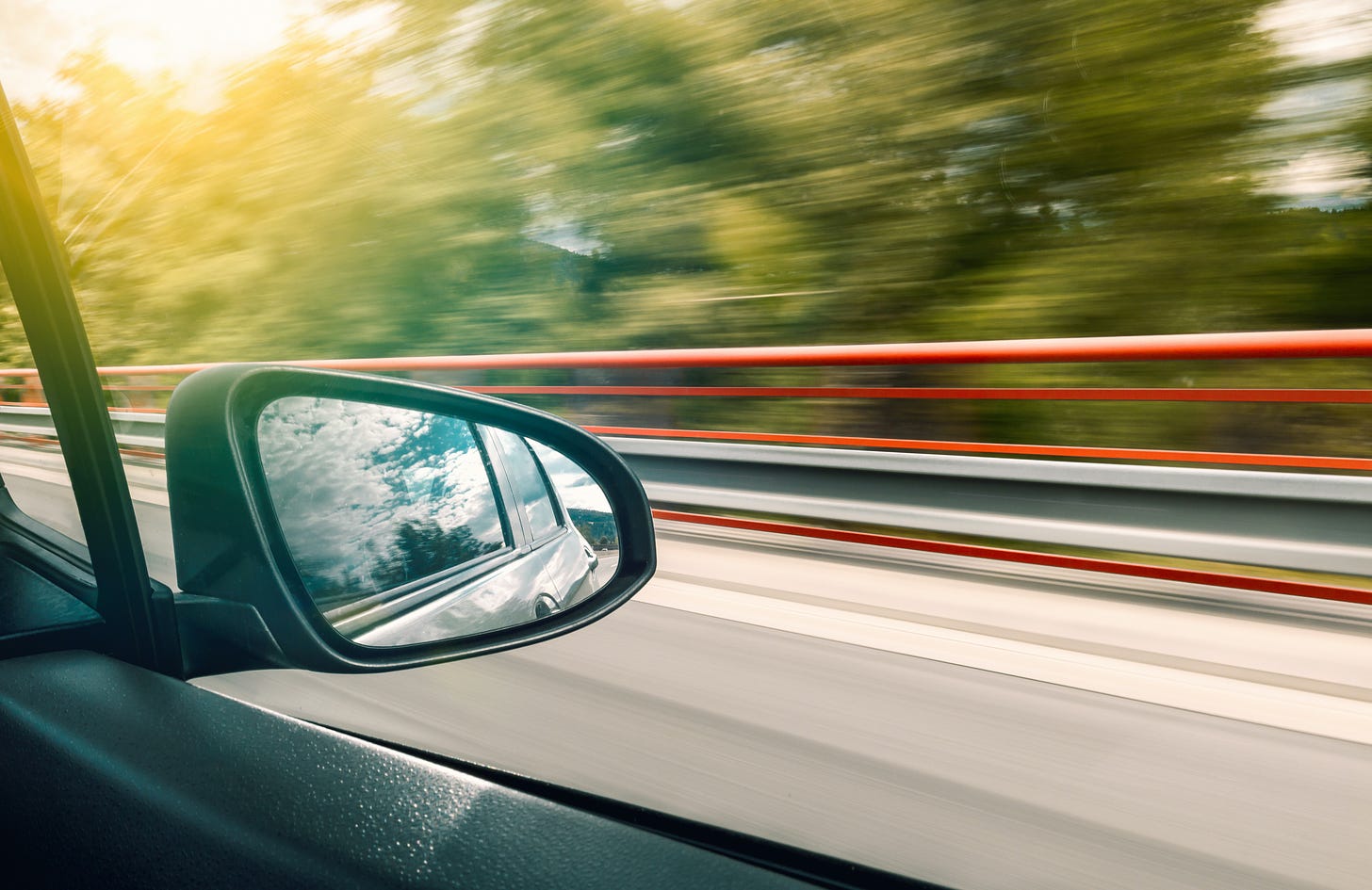
RIDE-HAILING SERVICES ARE fast and easy. Whether you’re a passenger or a driver, they are super practical. Convenient, too. But contrary to what you may believe, they’re not cheap, and certainly not good for us. And as it turns out, you can’t make a decent living at it.
We’ve become such rabid fans of convenience that we’ve forgotten to think about its larger costs on society and the fabric of community. What does it do to the economy, precarious workers, the environment, and our ability to make proper use of our famously big brains by thinking strategically instead of going for whatever will get us there the fastest? We don’t think about that.
A Scene in the Life
The car was crawling along the Queensway on a rainy Wednesday afternoon. We were headed to Hintonburg from the Trainyards. A trip that shouldn’t take more than 20 minutes. But of course the moment something starts falling from the sky, traffic in Ottawa turns into an unbecoming mess.
I was starting to despair of ever seeing Mister Sun again. I’d been driving in this grey hell for hours already, and I had a mood to match. There hadn’t been a spot of blue sky all day. There was so much water you couldn’t even see the sky at all. It felt like the upstairs neighbours had forgotten to turn off a faucet.
At least, I thought with the best Canadian attitude I could muster, it’s going to make the snow melt faster. On the other hand, it’s going to make my car so dirty I’ll need to get it washed again. Would that be the third time this week already? Who knew. I’d learned to stop sweating it.
Traffic was heavy like the rain had bloated it. There was no other explanation; it wasn’t rush hour, there were no accidents that I knew of, and there wasn’t even any construction yet. We were in that glorious two-week period between the last snowstorm and the first sighting of the dreaded orange cones.
The temperature outside the car was only slightly cooler than the air inside it, and I had to fiddle with the knobs to stop the windshield from fogging up. I’m not much of a science person, but I’d pay good money to anyone who could explain, using words with no more than three syllables each, why defrost doesn’t work when it’s raining like that.
We’d left the Trainyards 15 minutes earlier and were barely past Metcalfe on our way to a pocket of the west end that’s nowhere near as nice as the name implies. An area as yet ungentrified just off Carling. Rows of squat brown apartment buildings, the kind where busted-up window AC units leave rusty stains and where laundry machines sound like what came out of the Klopek basement in The ’Burbs.
Mr. Cranky on the backseat was ranting again.
“I don’t understand where this world is going when it’s so easy for a woman to decide she’s had enough and leave her husband, and the judge gives her everything. Marriage should be for life.”
What brought this on, you ask? Oh, nothing much. He’d just asked me whether I was married.
“I’m separated,” I answered without offering details because, well, they’re not especially pleasant and also not any of his business.
That apparently was enough to launch him into a full-blown tirade.
What was I to say? That forcing people to stay in unhappy marriages is cruel and besides, kindly keep your opinions to yourself you judgmental scold?
I mean, part of me understands his aversion to divorce. I can promise you it’s no picnic, and all else being equal people should make an effort to stick it out. I certainly have. For many long years. And now that I’m in the middle of this 24,000-ring circus, I’m a lot less quick to judge people for “deciding” to leave a relationship that’s become unbearable.
Sometimes, preserving your sanity is the only choice there is, even if it’s not much of one.
Oh, and no. Judges aren’t just a bunch of feminists who give everything to women without even asking anything in return, no matter how many times some guys repeat it.
In any event, I said nothing. I figured speaking up would only make things worse. I had a feeling expressing my point of view would only result in his verbal acrimony switching targets, away from the system onto my own personal self.
Uber doesn’t pay enough for me to put up with that.
Inside, though, the blood in my veins felt like a witch’s stew on a well-decorated Halloween porch. It was bubbling fiercely.
I was trapped in my own car, on the highway, sitting in slow-moving traffic with no way to stop anywhere. Worse, I had no legitimate (or legal) way to kick this sanctimonious scold out of my space.
Speaking my truth would punish me and do nothing to change this guy’s mind since it was obviously filled with particularly dense concrete. I didn’t open my mouth. It just wasn’t worth it.
In my head, that made sense. But my brain had to scream at my gut to shut up, too. To let it go. Ignore the taunts, don’t bite. Don’t let him provoke you. Yeah, so you’re trapped. Just hold on. It’s only temporary. You’ve lived through childbirth three times including once without drugs. This is nothing.
“In my country,” he continued, blissfully unaware that his opinions were not only unwelcome but thoroughly out of place, “women understand it’s better for them to stay married. Nobody wants them if they’re divorced.” By which he meant “no man” wants to date or marry a divorced woman. Like leaving a marriage was some sort of catastrophe to be avoided at all costs. And that of course the only people whose opinions mattered on the subject were unmarried men like, say, him.
That was pushing one button too many.
“In this country,” I said with more than a smidgen of irritation, “women are considered full persons, with as many rights and opportunities as men.”
And we don’t care what guys like you think, thanks very much, I added using the voice in my head.
He seemed unable to decide whether or not to protest. I wasn’t about to let him. If he decided to give me a shitty rating for being outspoken, so be it.
“I appreciate my rights, in case you’re wondering. I would never want my daughters to feel that their future depends on staying married to someone — man or woman — they don’t love. I don’t want their options limited by views like yours.”
Boom, right?
He thought so too, I think, judging by the look on his face. I don’t believe he’d ever been talked to like that by a woman. I didn’t care. I couldn’t contain myself any longer.
“I don’t understand,” he repeated, shaking his head at the rain.
“I don’t need you to.”
He stayed quiet the rest of the way, and didn’t say thank you when I dropped him off in front of his building. Of course not; the shock had made him revert to what I assume (probably rightly) was his baseline of toxicity. Like being rude and controlling ever made anyone a better person.
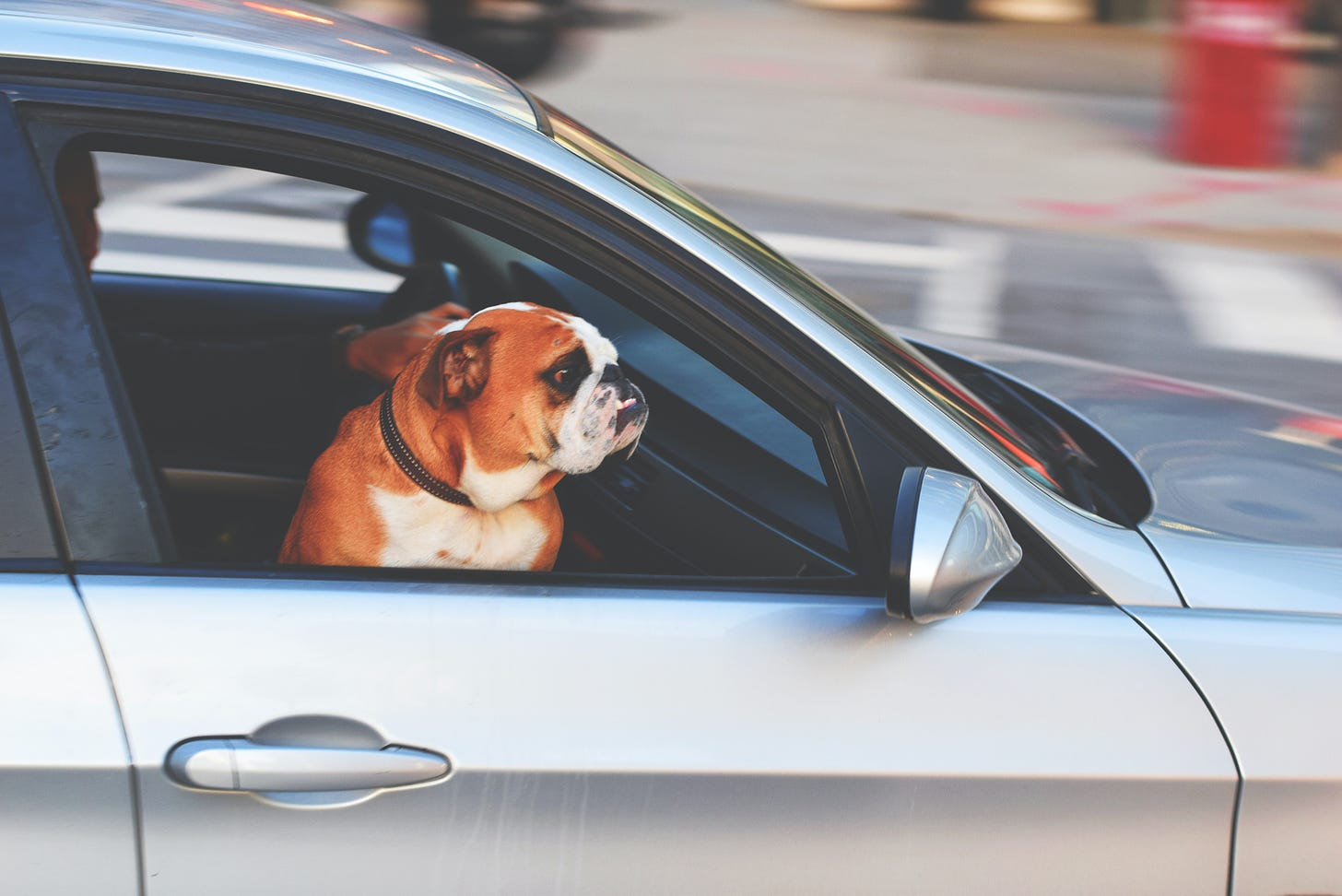
IT WAS THE SUMMER of 2018, I was getting dangerously close to the half-century, a professional with a fancy degree, mother of three, landowner and business owner driving people around for quick cash.
Clearly I’d taken a wrong turn. (See what I did there?)
No, wait. Hold the tomatoes. I’m not saying, nor do I believe, that there is anything shameful about driving for Uber — or any other job for that matter. We’re all trying to do our best, and people have their reasons for doing whatever it is they do for however long they do it. I respect everyone’s choice, even when I don’t understand it. At least, I try.
It’s just… well, I’d been a professional writer for 20 years. I’d been a journalist, a documentary filmmaker, a published author in both French and English. Why was I suddenly driving strangers in my car for barely more than minimum wage?
Like any good story, it’s complicated.
THE PROCESS OF BECOMING an Uber driver is pretty simple. All you need is a car, a phone and the Uber driver app. On this app you create an account where you upload the relevant documents: car registration, driver’s license, proof of insurance. Then you need to get your car safety-checked, a process you need to repeat every year (or twice a year if you drive an older model), and you have to get a vulnerable sector police check which you also upload.
Once all this paperwork is dutifully up in the cloud somewhere which you dearly hope is reasonably secure, you need to take a selfie that doesn’t cause your camera to explode in protest. First big roadblock right there. I totally look stupid in every single one I try. Upload it anyway.
Because Uber drivers are (still, court cases pending in a number of jurisdictions at the time of writing) legally considered independent contractors, I needed to register myself with the tax authorities to collect and redeem sales tax on my rides.
Now if you don’t know much about Uber driving other than how convenient it is as a passenger because it’s much cheaper than parking at the airport while you’re tanning yourself half-drunk in Cuba, you’re probably agnostic on the question of how, exactly, to classify the people who take you where you’re going. Employees? Contractors? Something in-between? Who cares?
It’s actually a pretty important point. When you join the algorithm-based gig economy, as a driver or food delivery person or handyman-for-hire, you are in many respects your own boss. You choose when to work and when to take time off, what time to have lunch and, well, that’s about it, at least when driving for Uber.
You can choose when to drive, and what to wear while doing it, but you don’t control much else. Everything is determined for you by the app and good luck trying to figure out how it works so you can take advantage of its features. It is 100 percent impenetrable.
That is something people like me worry about, because it tells you who owns the tools of labour. See, when you’re an employee, you don’t own your work computer or widget-making equipment. Your employer does. When you freelance, you normally own your own stuff. With Uber and other gig-economy giants, you’re somewhere in-between. You own your car and your phone, and that’s not negligible, but without being connected to the company’s system you won’t get work.
Access to the company’s infrastructure, its system, is known as a sine qua non. That’s Latin for that without which it don’t work. You can’t be an Uber driver without Uber sending you a ride. And no, they’re not interested in having you own their algorithm, thanks very much.
But at the same time no driver is directly employed by the company. We’re somewhere between independent contractors and employees, possibly closer to the former than the latter.
Anyway, those big companies and many workers’ groups, including big unions, have been fighting over that for some time now, in many different jurisdictions. Unions and workers’ groups say they want better working conditions for drivers, and companies argue if they make any change at all to the current model everything’s going to fall apart. (I paraphrase, but only slightly.)
The battles are ongoing. Here in Ontario, in February of 2020, just before the COVID-19 pandemic made those battles look like quaint worries from the Olden Times, the Ontario Labour Relations Board ruled that Foodora couriers were “dependent contractors” with the potential right to unionize.
“The couriers are selected by Foodora and required to deliver food on the terms and conditions determined by Foodora in accordance with Foodora’s standards,” wrote board vice-chair Matthew Wilson in his ruling. “In a very real sense, the couriers work for Foodora, and not themselves.” (A few short weeks after the ruling, Foodora announced it was declaring bankruptcy and ceasing operations in Canada. Make of that what you will.)
Then in June 2020 the Supreme Court of Canada, in a ruling on a somewhat technical point, effectively opened the door for drivers to be recognized as employees by Uber.
We shall see where this goes from here, but until further notice you should know that as independent (or mostly dependent) contractors the law requires you to collect and redeem sales tax. Woohoo.
I’m kidding. It’s a lot less fun than it sounds but because I prefer to spend most of my time out of jail I comply. I recommend you do, too.
Several weeks after I started driving for Uber I realized that I could also work for Lyft if I wanted to. I wanted to. So I uploaded the same documents to their app and voilà, I was driving for both. Just not at the same time. That would have been awkward.
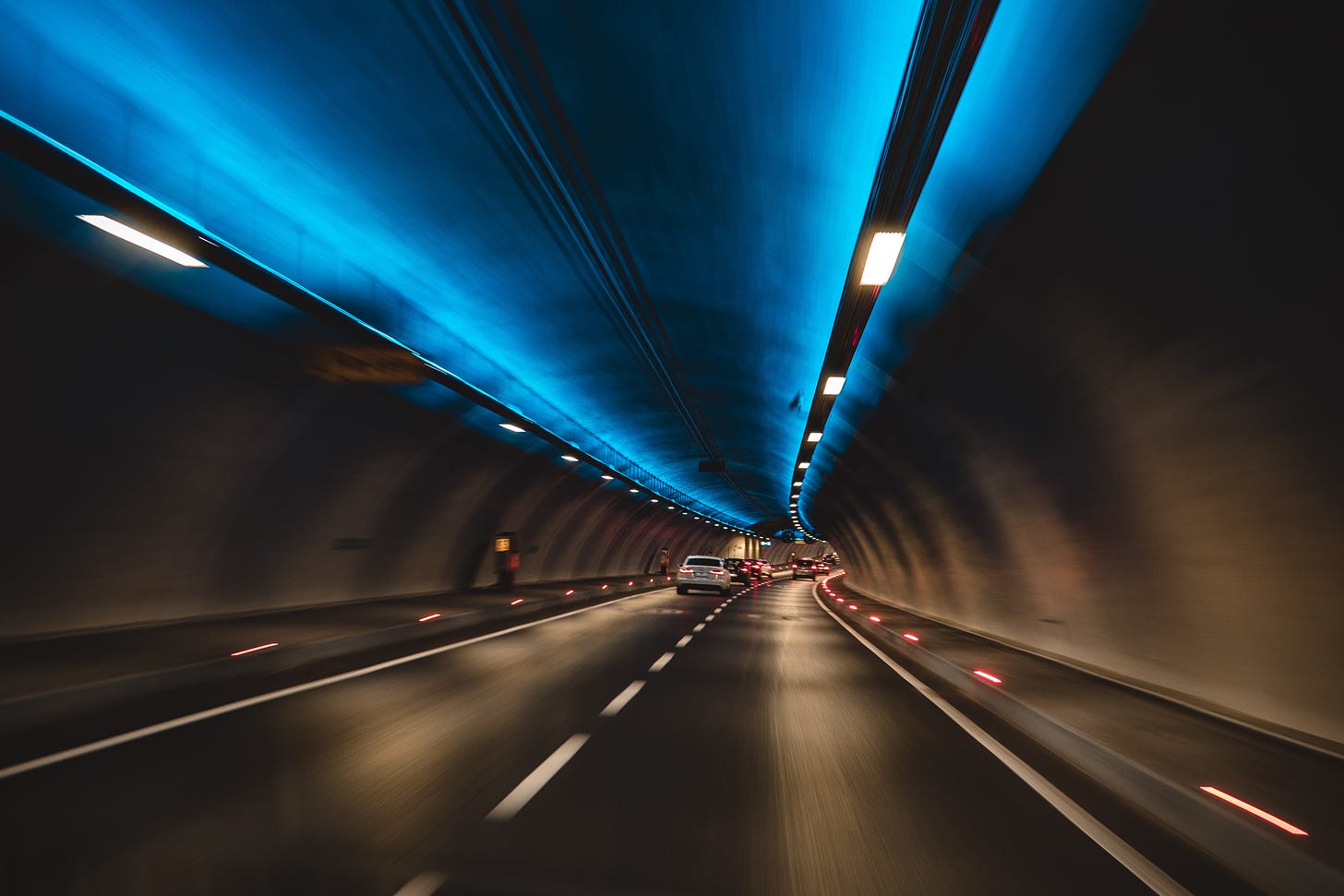
BETWEEN MY FIRST RIDE at the end of June 2018 until early July 2019, I drove 17,500 km on 998 trips for Uber, and 430 trips for Lyft. That’s 1,428 rides in total.
I earned $12,773.84 doing that.
I know maths are hard, but let’s do it anyway. My average ride was 12.24 km and on that average ride I earned $8.95 including tips and promotions. I worked about 15 hours a week, give or take, so that works out to, er, not quite $20 an hour.
So, yeah. Not a bad little sideline, considering how easy it is to get in that business and how flexible the work schedule is since you make it up all by yourself.
But wait. I haven’t told you everything. From those earnings you must deduct what you spend on gas, oil changes, car washes, repairs when needed, regular car safety checks, water bottles and snacks for your passengers, increased data plan on your cellphone if necessary and — that one’s a biggie — depreciation on your car.
Sure, most of these expenses are tax deductible. That’s one advantage of being an independent (or more or less dependent) contractor. But damn. You only see that benefit at tax time, rather a while later. And in order to do that, you need to keep track of your mileage so you can tell the CRA how much you drove for Uber versus your personal driving. MileIQ, in case you’re interested, is the best app out there for that. Well worth the $8 a month, which you can write off as well.
What’s not deductible but should be very much counted is the amount you spend on coffee just because you need a bathroom break and can’t stand the thought of sneaking into a Tim’s just to use the loo without buying anything. Or the fries you munch on to break the monotony of driving. Or, more often than not, both.
ASK ANYONE WHO’S EVER known me whether they think I’m lazy and they’ll laugh in your face. You can call me a lot of nasty names, for sure. Half of them I no doubt deserve. But not even the people who wake up in the middle of the night to hate my guts would say I’m a slacker.
Which is why it was especially surprising to hear my ex accuse me of deliberately not working very hard after our separation. I suspect the intention was to shame me, right there in the open, for being deliberately underemployed. For not trying very hard to support myself.
Hell.
My very puzzled lawyer turned to me and asked: Is driving for Uber something you do when you have other options?
I was tempted to say no, but in truth it’s a little more complicated than that. I found Uber and Lyft to be a great short-term, no-commitment opportunity to earn enough to cover a few living expenses so as not to eat into my capital too much while I found a job that was right for me. It wouldn’t be true to say I didn’t have other options. But I understood what my lawyer meant.
A lot of people you’ll meet who drive for Uber and/or Lyft don’t have the options I had. Some are very qualified professionals from other countries who need a source of income while they go through the process of having their credentials validated for work in Canada as engineers or nurses or what have you.
Other drivers are cabbies whose opportunities have declined since the arrival of app-based ride hailing. Instead of fighting the enemy, they figured they’d join instead. If you enjoy driving people around, I’d say that’s a win-win.
I’ve met other drivers who were retired from their main job, men in their 60s who didn’t feel like hanging around the house all day, didn’t play golf, and didn’t want to travel. These charming fellows enjoy human contact, and if you’ve ever been in their car as a passenger you’ll know just how chatty they are.
Students, and other folks who either need part-time hours or something to tie them over until their next opportunity comes along, probably make the bulk of drivers. These are people who, like me, don’t intend to make Ubering into a career, just something to do for a while. That’s one reason the companies hire new drivers aggressively, by offering signing and/or referral bonuses. People must drop off in astounding numbers.
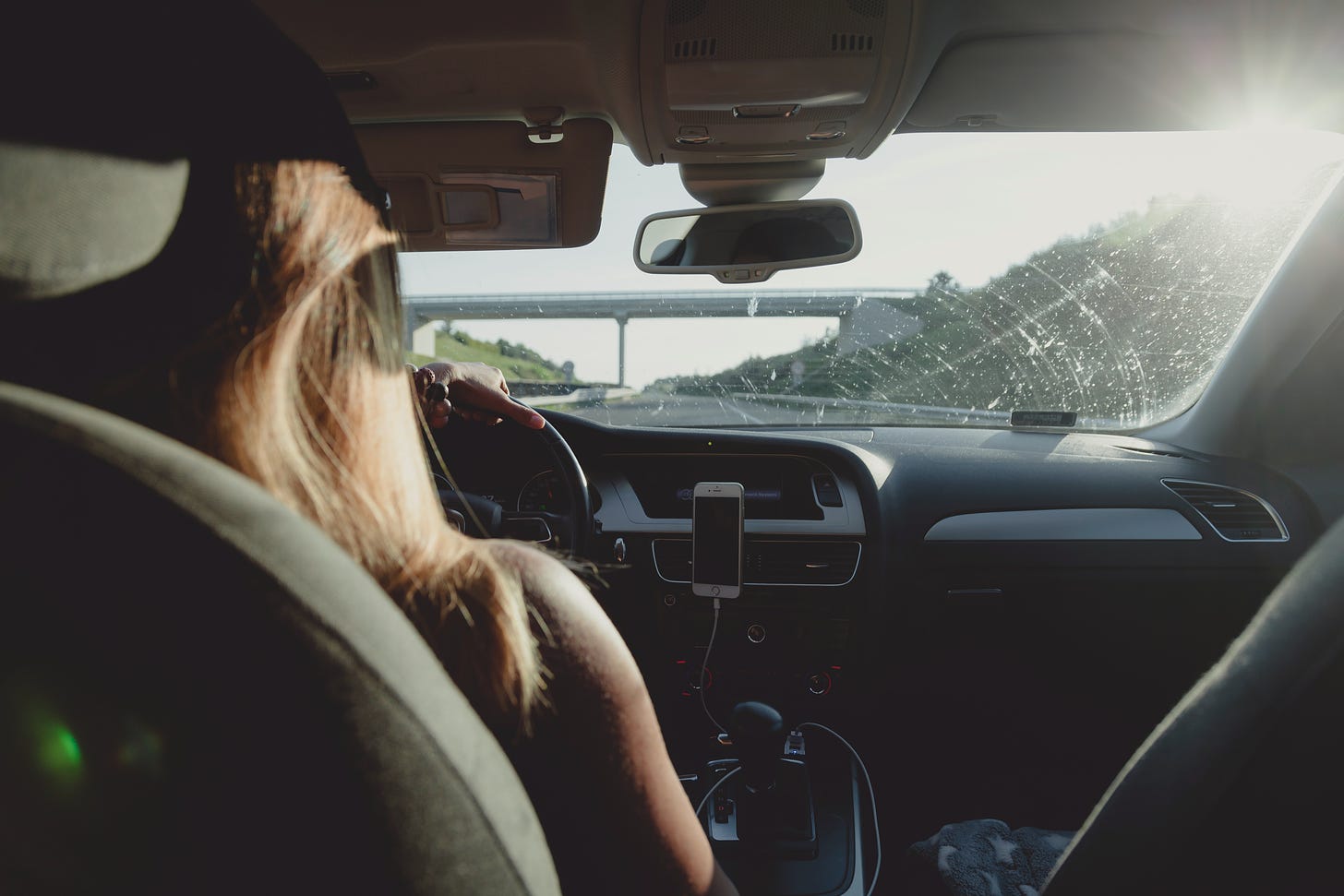
YOU KNOW WHAT YOU don’t find behind the wheels of ride-hailing cars, though? Women.
There are a few, but so few in fact that by far the most common remark I got from passengers was how rare it was to be driven around by a woman.
Sometimes passengers are almost in shock, sometimes (and these are women themselves) they express relief. Many told me stories of creepy male drivers asking them personal questions about boyfriends or where they lived that — assuming the stories are true — are thoroughly beyond the pale. I’d hate to think there are many of those morons working for Uber or Lyft, but I’ve heard comments like this too many times to assume they’re not true.
Safety is also a concern for women drivers, and maybe it explains why there are so few of us. When you’re driving your attention is obviously on the road, or at least it should be. Not so much on your passenger. It’s hard to monitor someone from the back of your head, even if you happen to have lots of training doing just that when your toddlers are in the backseat.
Then there’s dealing with guys who are unaccountably convinced you’re attracted to them. Most of them aren’t dangerous, but they are unpleasant and not nearly as funny as they think, which isn’t saying much. Even if nothing ever happens, being on the receiving end of unwanted flirting is no woman’s definition of harmless fun.
Some men, though, are nothing if not persistent and if you search a little bit you’ll find plenty of stories of female drivers who say clients used the “lost and found” feature in the app to get in touch with them directly once the ride was over, pretending to have left something in the car when in fact all they wanted was to harass the driver some more. This has never happened to me and I can promise you that if it had I would not have reacted pleasantly.
Here’s the problem with rejecting or giving the cold shoulder to a customer who’s developed an immediate fixation on you: He can, and usually will, give you a bad rating on the app, which will result in your average going down and potentially reduce the opportunities to pick up customers as the app favours drivers with high ratings. Knowing that, when some guy chats you up, appropriately or not, your best bet is to humour him just enough that he thinks you find him amazing, thus guaranteeing a five-star rating.
It’s a game any female knows how to play, and without wishing to boast unduly I’m rather good at it, but that doesn’t mean I find it hilarious. And why, in this day and age, would it be considered a normal part of any job for a woman to put up with a client’s inappropriate advances? I thought we’d evolved past the Mad Men era. We wouldn’t accept this in an office environment or a coffee shop, why do I shrug when it happens in my personal vehicle?
Here’s another thing: If you want to make more than minimum wage driving Uber or Lyft you’re going to have to drive late nights and weekends, when most of the bonuses are. But here’s the catch: In order to qualify for those bonuses you have to keep a high acceptance rate. That means if you go to pick up Fred and, upon arriving, decide that you don’t feel safe at all picking him up with his three burly drunk buddies and you decide to cancel, you may be jeopardizing your bonuses and defeating the purpose of staying up late on weekends.
There is a clear economic incentive to accept all rides regardless of personal safety feelings, and it only takes one bad experience to make someone like me say, you know what, keep your bonuses, I’m not interested in working those hours. Which brings your revenues down to barely above minimum wage and, well, if that’s all you’re going to make there are other jobs out there that will feel a lot less unpleasant.
SO WHY, DESPITE WHAT you or my lawyer might think, and the relatively unpleasant working conditions inherent in driving your car around all day, do some people still dream of one day becoming a ride-hailing professional?
I guess it depends on where you sit.
Maybe I am more privileged than I realize. To me, owning a small car is not an especially significant accomplishment. Certainly it’s a massive step down from what I used to drive when I was married. But if you’ve been living hand-to-mouth for years, I suppose my $8,000 (one hopes) Elantra is a dream come true.
It can also be that being in a position to pass a police check with flying colours is yet another privilege. Not to say that I never did anything illegal in my life, but my infractions are of the forbidden-U-turn variety, not the drug dealing kind. Perhaps I’m boring, but even though I was pretty stupid back in the day my idiocy did not lead me to the cop shop.
Now imagine someone who got busted for, say, armed robbery when they were 18, who did their time and paid their dues and have been on the straight and narrow every since. Would they be accepted as an Uber driver? Even though they may be a much better driver than me, someone who might enjoy the work more than I do, and who might be the most helpful, considerate driver around? Not a chance.
I guess it’s all relative. When you’re in a difficult economic situation, you see the ability to work independently, according to your own schedule, driving your own personal car as an ambition worth pursuing. When you’re someone who, like me, used to be financially comfortable but is now looking at a very different situation post-separation, you look at it differently.
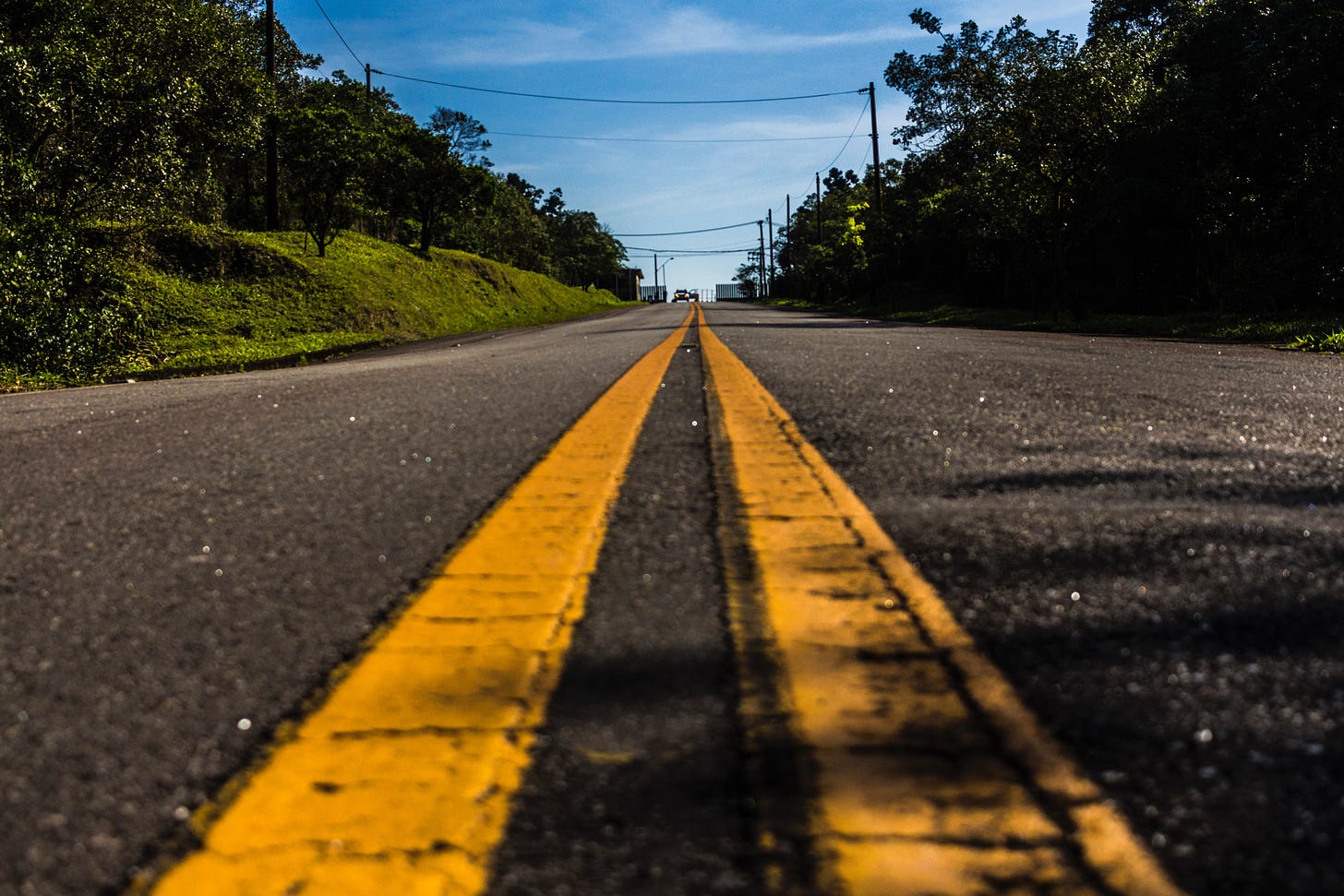
Here’s a question I never thought about before spending so much time ferrying passengers throughout my city: Where, exactly, did we get the idea that transportation should be a lonely affair?
When you watch videos of people pushers on trains in places like Japan or China, you shudder. At least if, like me, you suffer from claustrophobia. Being stuck in tight corners is not for me, thanks very much. I would rather wait for another train than jump on a super crowded one.
Fortunately in North America it’s fairly rare that public transit is so tightly packed. But it happens enough in some places that emphasis should be on adding capacity there, not widening roads. Here in Ottawa, a city of just one million people (plus a few friendly tourists), we have a maddening habit of widening every bit of suburban road whenever they get too slow because they’re used beyond capacity. It’s just that every single time a road is widened, more people use it and within weeks it’s back to being infuriatingly slow again.
It’s a well-known phenomenon called “induced demand” and the only people who seem never to have heard of it unfortunately are the ones in charge of deciding where transportation budgets will be spent. So we get lots and lots of cramped roads everywhere and nowhere near enough money left over to buy buses or trains to make public transit pleasant or convenient (I’d take one out of two, but ideally would want both).
And nobody’s happy.
Car commuters demand more roads. When someone says no, what we need is better transit these people scoff that transit doesn’t work for them.
What they mean is that they’re too good to share precious personal space with other humans. Because otherwise, there is very little difference between travel times if you happen to work regular business hours.
There’s a woman who lives in my building and works near where I do. She drives herself in her vehicle. I take transit — one bus then the LRT. It takes me about 50 minutes door to door; 45 sometimes if the gods of transit connections work in my favour. Occasionally it takes 55 minutes, when the train stops for no good reason or there’s some accident on the road ahead of us on the bus route.
How long does it take her to do the same distance by car? I asked: 45 minutes.
I don’t know how much it costs her for parking, but you have to add it to gas plus wear and tear on her vehicle. Me? My transit pass is $120/month and it includes everything. But the most important difference is not money. It’s that during my commute I get to read, listen to podcasts or audiobooks, sometimes I’ll sneak in a bit of Netflix. I can also work on my iPad if I feel so inclined. Or stare out the window thinking about my next column. My neighbour can listen to things, too. But mostly her attention needs to be on her driving.
I wouldn’t trade places with her even if parking and gas were free.
Yes, but she’s alone in her car and doesn’t have to interact with anyone!
Precisely. That’s the problem right there. She’s using several square metres of public space by driving her private vehicle. I occupy a much smaller bubble, and when things get crowded I can squish a little. I don’t mind sitting next to someone I don’t know. Often I strike conversations with interesting people that way. It keeps me connected to my city, my fellows, what goes on in my world.
*Asterisk! COVID-19 is obviously making the squishing part a most unattractive prospect, even while wearing masks, which is why we need more transit capacity, not less. We seem instead to have made it easier for people to use private vehicles as physical distancing tools, and if you don’t see the problem with this, I’m afraid you’re wearing a fine pair of privileged blinkers.
The car does the opposite of making humans feel like they are part of a larger society of fellows. On top of which driving in heavy traffic has the unique ability to turn the gentlest soul into a selfish maniac unable to let anyone in or slow down at a yellow light. When you’re driving, you want to go fast. You get frustrated easily, angry, stressed out. It’s just not pretty.
On the bus or the train, especially if your attention is on a interesting book or the latest Netflix rom-com, you’re happy with the blood pressure to show for it.
IN MID-MARCH 2020 our world turned inside out. Suddenly we were all ordered to stay home as much as possible, and not to get within two metres of each other. We were to work from home, only go out for essential supplies, and generally live in fear.
One of the more pleasant aspects of this enforced lockdown was the silence. My street, which is normally busy all the time but especially in the morning, was suddenly deserted. I could hear the birds from inside my home, without even bothering to open the windows.
Everything slowed to a crawl. Except our air quality which shot through the roof. We had space, time, and nowhere to go.
It was very tough no doubt for those whose jobs and livelihoods disappeared. I don’t want to make light of that. I was fortunate enough to have a job that allowed me to work remotely, and financially I did not suffer from the pandemic. I may even have saved myself some money by not going out, and not commuting to work. As I write these lines I haven’t purchased a transit pass in a over five months.
The enforced peace and quiet made me dream of a world where people don’t rush about so much. A world where we slow down, and appreciate wildlife and nature, including the cute little skunk families going from one porch to another.
Nobody knows where we’ll be in a year or two from now. I doubt we’ll be out of cars. For that we’ll need more than just a pandemic. We’ll need a genuine revolution, one that might start with more working from home, less rushing about, more whistling and less griping.
Maybe Uber and Lyft and all the other “convenience-first” tech bro companies will adapt, or maybe they won’t. I’m kind of hoping they do, and help the rest of us live happier, healthier, and less frantic lives.

